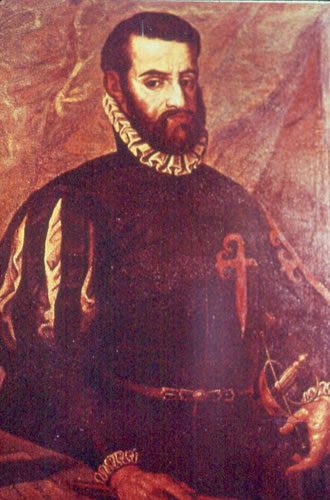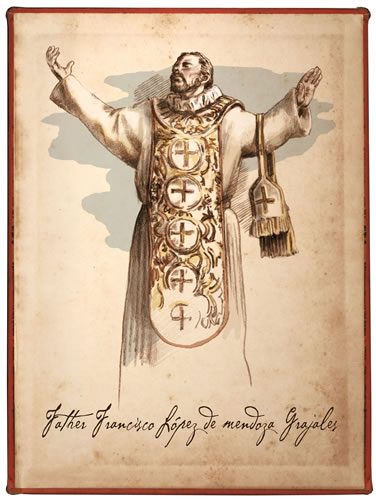Most of what is known about the establishment of St. Augustine comes from the words of three people who witnessed the events directly, and recounted them. This is what they said:
Pedro Menéndez de Aviles: The Adelantado

“I sent on shore with the first 200 soldiers, two captains, Juan Vincent a brother of the Captain Juan Vicente,and Andres Lopez Patino, both old soldiers, in order to throw up a trench in the place most fit to fortify them selves in, and to collect there the troops that were landed so as to protect them from the enemy if he should come upon them. They did this so well that when I landed on Our Lady’s Day to take possession of the country in your Majesty’s name, it seemed as if they had had a months time, and if the had had shovels and other iron tools, they could not have done it better, for we have none of these things, the ship laden with them not having yet arrived. I have smiths and iron, so that I can make them with dispatch, as I shall. When I go onshore we shall seek out a more suitable place to fortify ourselves in, as it is not fit where we are now. This we must do with all speed, before the enemy can attack us, and if they give us eight days more time, we think we shall do it.”
Pedro Menendez de Aviles translated by Henry Ware “Letters of Pedro Menendez de Aviles”, Massachusetts Historical Society Proceedings VIII:419-425.
Gonzálo Solis de Méras: The Captain and Brother-in law
“As soon as he reached there (the harbor of St. Augustine) he landed about 300 soldiers and sent two captains with them, who were to reconnoiter that daybreak the next morning the lay of the land and the places which seemed to them strongest (for defense), in order that they might dig a trench quickly while it was being seen where they could build a fort…” (Gonzálo Solís de Méras, Connor translation p. 89)

Francisco López de Mendoza Grajales: The preist
“They went ashore and were well-received by the Indians, who gave them a very large house of a cacique which is on the riverbank. And then Captains Patiño and San Vicente, with strong industry and diligence, ordered a ditch and moat made around the house, with a rampart of earth and fagots...” (Father Francisco López de Medoza Grajales, Lyon translation 1997:6.)
The enemy
(The Spaniards) “went on shore at the River of Seloy, which we had called the River of Dolphins” (.Jean Ribault) “had been informed by King Emola, one of our neighbors arriving during our consultations, that the Spaniards had gone ashore in great numbers and had seized the houses of Seloy and used them for their Negroes whom they had brought to do labor. He said that they now lodged themselves on the land and had made protective trenches around themselves” Rene de Laudonniere- pp. 158-159 in Bennett, C. 2001, Three Voyages University of Alabama Press, Tuscaloosa.